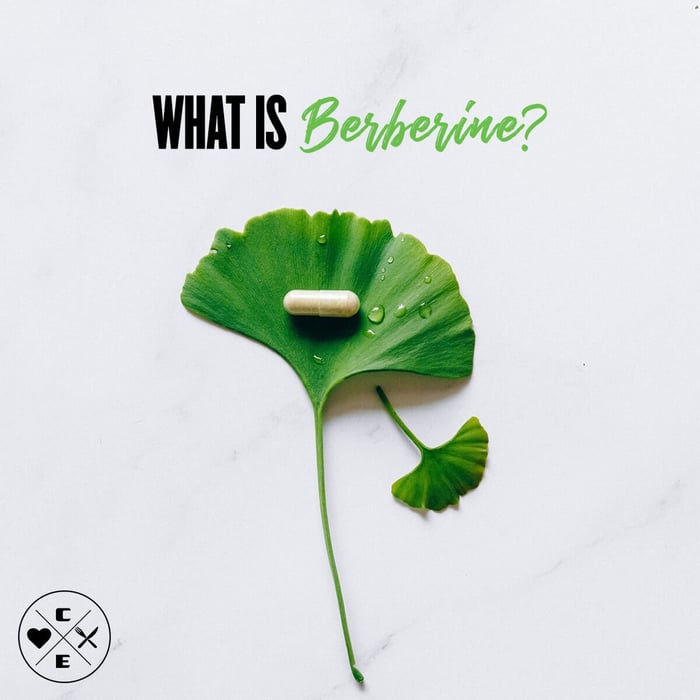What is berberine?
Berberine is a bright yellow plant compound used in traditional systems for GI and metabolic complaints. Modern research explores its effects on glucose and lipids, likely via AMPK activation, microbiome changes, and bile-acid signaling. It’s sold as a dietary supplement in the U.S. (not an FDA-approved drug).
What it may help (and what it won’t)
- Type 2 diabetes (adjunct): Meta-analyses and RCTs suggest modest improvements in fasting glucose and HbA1c, sometimes as add-on to standard therapy. A 2024 meta-analysis and a 2022 review both found glucose-lowering benefits; new trials are testing berberine-based salts as investigational drugs. It doesn’t replace prescribed meds or lifestyle. :contentReference[oaicite:1]{index=1}
- Lipids: Reviews report small-to-moderate reductions in LDL-C and triglycerides (mechanisms may include PCSK9/LDLR pathways), though estimates vary and study quality is mixed. :contentReference[oaicite:2]{index=2}
- Weight: Evidence shows modest loss on average (often when doses exceed ~1 g/day for ≥8 weeks). It is not comparable to GLP-1 medicines for weight reduction. Pair with a calorie plan and protein/fiber-forward meals. :contentReference[oaicite:3]{index=3}
Working on weight? Start with your calorie & protein targets, build meals from foods that keep you full, and consider our calorie-controlled meal plans.
Typical doses & how to take it
- Common pattern: 500 mg, two to three times daily with meals (≈1,000–1,500 mg/day) for at least 8–12 weeks before judging effect; GI upset is the most frequent side-effect. :contentReference[oaicite:4]{index=4}
- Titration tip: Start once daily for a few days, then add doses as tolerated to limit nausea/constipation.
- Set expectations: Any benefits are generally incremental and depend on your baseline A1c/lipids and overall diet/activity. :contentReference[oaicite:5]{index=5}
Safety, interactions & who should avoid it
- Avoid in pregnancy, breastfeeding, and infants: Berberine can worsen jaundice and has been linked to kernicterus risk in newborns; major U.S. health agencies advise not using berberine in these groups. :contentReference[oaicite:6]{index=6}
- Drug interactions: Berberine affects CYP enzymes and transporters (e.g., CYP3A4/2D6; P-gp) and can raise levels of certain drugs. Classic example: it significantly increases cyclosporine exposure—dangerous without specialist monitoring. :contentReference[oaicite:7]{index=7}
- Diabetes meds: Using berberine with agents like metformin, sulfonylureas, insulin, or GLP-1s may compound glucose-lowering—monitor with your clinician. Follow the ADA Standards of Care approach: food-first, medication-guided, and individualized. :contentReference[oaicite:8]{index=8}
- Common side-effects: GI upset (constipation/diarrhea, nausea, cramps). Stop and talk with your clinician if symptoms don’t settle. :contentReference[oaicite:9]{index=9}
How to choose a quality supplement
- Look for independent third-party seals like USP Verified or NSF Certified to reduce risks of mislabeling/contaminants (seals don’t prove effectiveness). The NIH ODS also explains third-party testing. :contentReference[oaicite:10]{index=10}
- Avoid blends that hide actual berberine mg per serving; confirm the form (e.g., berberine HCl) and total daily dose.
Prefer food-first? Build protein- and fiber-forward meals (high-protein basics; sugar-smart swaps). For training days, see post-workout carbs.
FAQs
Is berberine really “nature’s Ozempic”?
No. GLP-1 medications have large, consistent weight-loss effects in RCTs; berberine’s weight effect is modest and inconsistent. Think of it—if used at all—as an adjunct to lifestyle, not a replacement for prescribed therapy.
How long before I see changes?
Most studies evaluate 8–12 weeks; some metabolic markers change sooner, but consistency matters. Adjust with your care team based on labs and tolerance. :contentReference[oaicite:11]{index=11}
Can I stack berberine with other supplements?
Be cautious. Because berberine interacts with CYP enzymes and transporters, stacking increases interaction risk—especially if you take prescription meds. :contentReference[oaicite:12]{index=12}
References
- NCCIH — In the News: Berberine (uses, side-effects; avoid in pregnancy/breastfeeding/infants). nccih.nih.gov. :contentReference[oaicite:13]{index=13}
- MotherToBaby — Berberine Fact Sheet (breastfeeding/pregnancy cautions). ncbi.nlm.nih.gov. :contentReference[oaicite:14]{index=14}
- Frontiers in Pharmacology 2024 meta-analysis — berberine for T2DM (glucose outcomes). frontiersin.org. :contentReference[oaicite:15]{index=15}
- Systematic review 2022 — glucose-lowering effect of berberine (signal depends on baseline A1c/FBG). pubmed.ncbi.nlm.nih.gov. :contentReference[oaicite:16]{index=16}
- JAMA Netw Open 2025 RCT — investigational berberine-ursodeoxycholate in T2DM (emerging drug). jamanetwork.com. :contentReference[oaicite:17]{index=17}
- Cardiology Discovery 2023 meta-analysis — lipid changes (LDL/TG reductions; quality caveats). journals.lww.com. :contentReference[oaicite:18]{index=18}
- NCCIH — Berberine & Weight Loss (effects most evident >1 g/day and >8 weeks). nccih.nih.gov. :contentReference[oaicite:19]{index=19}
- Cleveland Clinic 2025 — typical dosing ranges and timing with meals. health.clevelandclinic.org. :contentReference[oaicite:20]{index=20}
- Classic RCT dosing example (500 mg three times daily). pmc.ncbi.nlm.nih.gov. :contentReference[oaicite:21]{index=21}
- Cyclosporine interaction — clinical/PK data (↑ exposure); mechanism likely CYP3A4/P-gp. pubmed.ncbi.nlm.nih.gov · pmc.ncbi.nlm.nih.gov. :contentReference[oaicite:22]{index=22}
- NIH ODS — why third-party seals matter (USP, NSF). ods.od.nih.gov · usp.org · nsf.org. :contentReference[oaicite:23]{index=23}
Educational content only; not medical advice.




